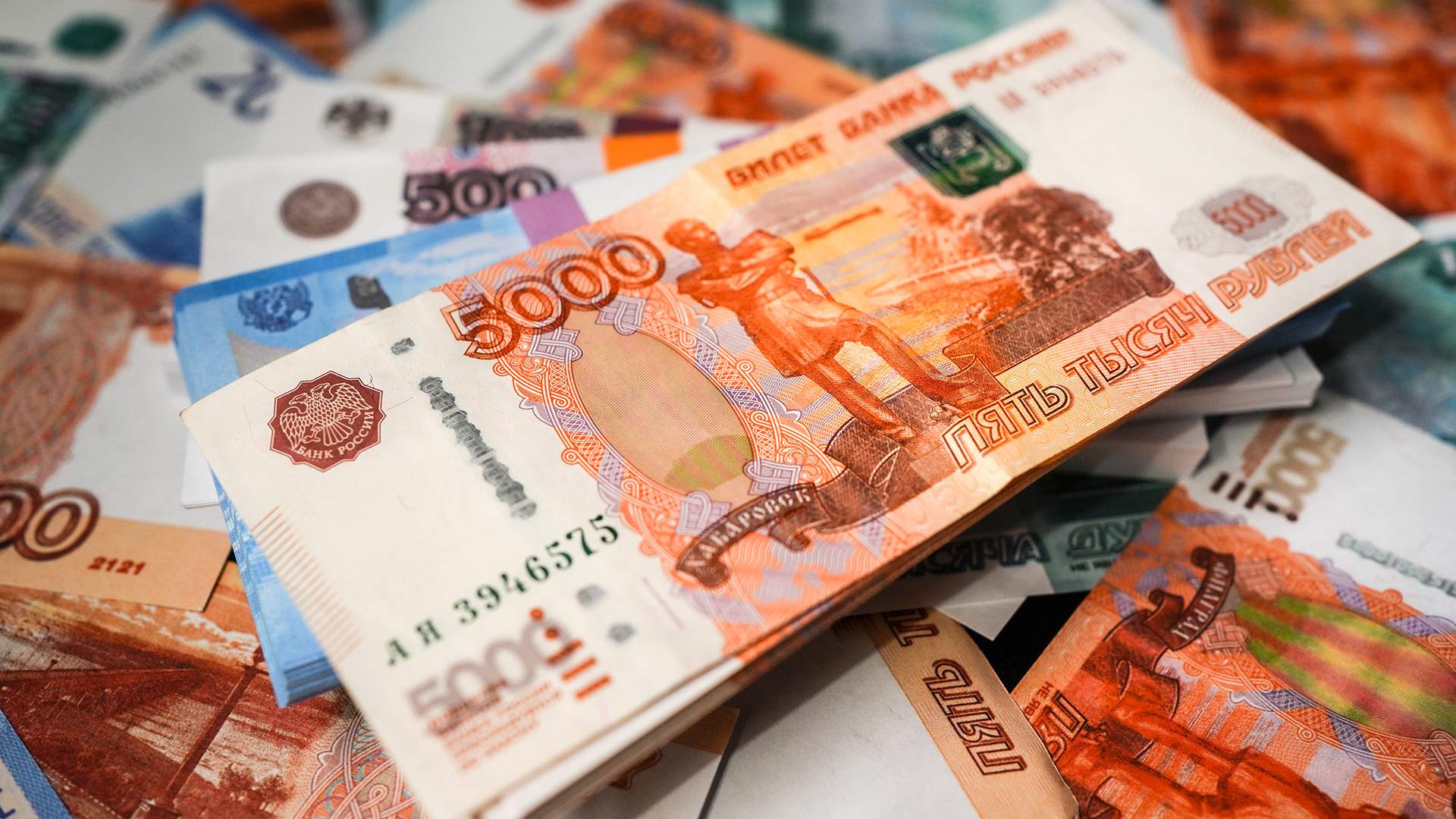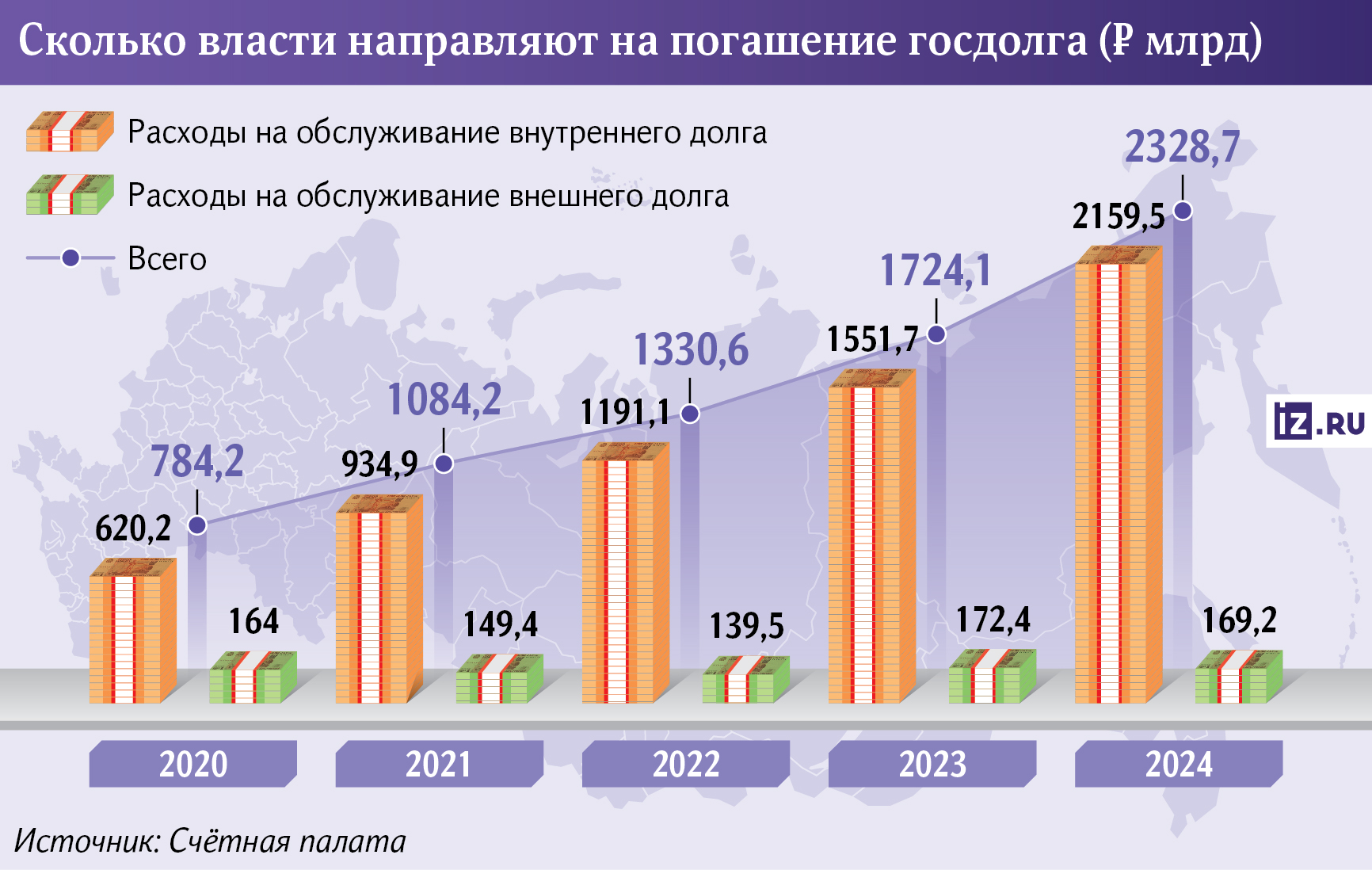- Статьи
- Economy
- An interesting story: the authorities spent a record 2 trillion on servicing the national debt.
An interesting story: the authorities spent a record 2 trillion on servicing the national debt.

Last year, the authorities allocated a record 2.3 trillion to service the national debt, according to the report of the Accounting Chamber (Izvestia studied it). In just one year, expenses for this item have increased by a third. So far, the national debt in Russia does not exceed 15% of GDP and it is small compared to other countries, such as the United States, so there are no risks to financial stability, experts say. However, under the conditions of sanctions and withdrawal from toxic currencies, it is necessary to borrow on the domestic market by placing federal loan bonds and paying high interest rates on them due to the key 21%. This is another argument for the Central Bank to reduce the main indicator in order to reduce pressure on the budget. What are the risks of increasing borrowing — in the material of Izvestia.
Government debt in Russia: the size and how it is repaid
The public debt in the Russian Federation increased by 14% last year to 29 trillion rubles, according to the report of the Accounting Chamber on the execution of the federal budget for 2024. Government borrowing now accounts for 14.5% of Russia's GDP.
The main growth is due to domestic debt. Last year, it increased by 14% to 23.7 trillion rubles, according to the auditors. First of all, the indicator is rising due to the rates on federal loan bonds (OFZ), explained Olga Belenkaya, head of the Macroeconomic Analysis Department at Finam. Last year, the interest on them grew along with the key one — in 2024, they reached 22% for individual issues.
The second, smaller part of the government debt is denominated in foreign currency. According to the results of last year, it decreased slightly in dollars to $52 billion, according to the report of the Accounting Chamber. In recent years, Russia has significantly reduced its external borrowings — the country is moving away from raising funds in toxic currencies against the background of sanctions restrictions, said Elena Voronkova, Associate Professor of the Department of State and Municipal Finance at Plekhanov Russian University of Economics.
Nevertheless, in ruble terms, the external debt increased by 10% last year to 5.3 trillion due to the dollar exchange rate. Last year, the ruble weakened by a comparable amount, from 90 to 102 rubles per $1.
Along with the growth of the national debt itself, the Ministry of Finance's expenses for its maintenance are also increasing. According to the Accounts Chamber, the authorities allocated 2.3 trillion rubles for this purpose last year. Compared to 2023, the figure has increased by a third — then it was 1.7 trillion, and before that it was less.
According to Izvestia's calculations, last year a record amount was allocated for repayment of borrowings in 13 years — up to this point, there is no publicly available data.
The funds allocated to repay the national debt last year are a really large amount, even on a budget scale — 5% of all expenditures. For comparison, comparable money was allocated for all national projects in 2024 — 3.3 trillion rubles.
At the same time, despite the increase in expenses for repayment of domestic debt, last year, on the contrary, expenses for servicing external debt decreased, but only slightly — by 3.2 billion rubles.
Are there any risks due to rising public debt costs
When assessing the risks of a growing national debt, the Ministry of Finance relies not on its absolute values and repayment volumes, but on the percentage of borrowings relative to GDP. As Deputy Finance Minister Irina Okladnikova stated back in 2023, the agency considers 20% of the gross domestic product to be the safe border of the national debt.
Meanwhile, in Russia, for the third year in a row, the national debt remains close to 14.5% of GDP, estimated Olga Belenkaya from FG Finam.
— In Russia, the share of public debt in GDP is only 15%, which is a very low value. If we compare us with other BRICS, EAEU and G20 countries, Russia has one of the lowest indicators," said Natalia Milchakova, a leading analyst at Freedom Finance Global.

And for many giants of the global economy, the value of public debt is much higher, Olga Belenkaya reminded. For example, in the United States, the total volume in relation to GDP is more than 120%, in China — about 80%, and in Germany — about 60%.
Nevertheless, such a sharp increase in public debt servicing costs is worrying. It is important for the state to avoid the so-called debt spiral, when borrowings increase not because money is directed to the economy, but because it has to repay more and more interest on OFZS, warned Elena Voronkova from Plekhanov Russian University of Economics. The situation was similar in Russia in the 1990s - it is important for the authorities to prevent this.
Judging by the budget plan, the national debt will grow this year, but only slightly — to 29.4 trillion (from 29 trillion in 2024), Olga Belenkaya recalled. The figure may be higher in case of a larger budget deficit: as Deputy Finance Minister Vladimir Kolychev recently explained, the treasury shortage may increase if the oil price turns out to be closer to $60 per 1 barrel — lower than it is now.
In the meantime, the budget deficit for 2025 is planned at 1.5 trillion rubles. They are going to repay it by placing OFZs, however, given that a number of old issues are planned to be repaid, a significant increase in government debt is still not expected.
This year, the situation with the growth of the national debt and spending on its maintenance should begin to improve. At least because a gradual reduction in the key rate is expected, which will allow the Ministry of Finance to place OFZs at lower interest rates. At least, this argument of the Central Bank should be taken into account when making monetary policy decisions. According to Natalia Milchakova's expectations, a reduction in the key rate may occur as early as the fall of 2024.
The Ministry of Finance informed Izvestia that all borrowed funds in 2025 will be raised thanks to OFZ, and the state will place only priority government bonds with a constant coupon income. At the same time, if the interest rate level decreases, expenses will be reduced only for the existing bond portfolio.
According to the calculations of the Ministry of Finance, the national debt in 2025 will not exceed the safe mark, but will be around 16.5% of GDP — that is, it will grow by no more than 2 percentage points.
Переведено сервисом «Яндекс Переводчик»



